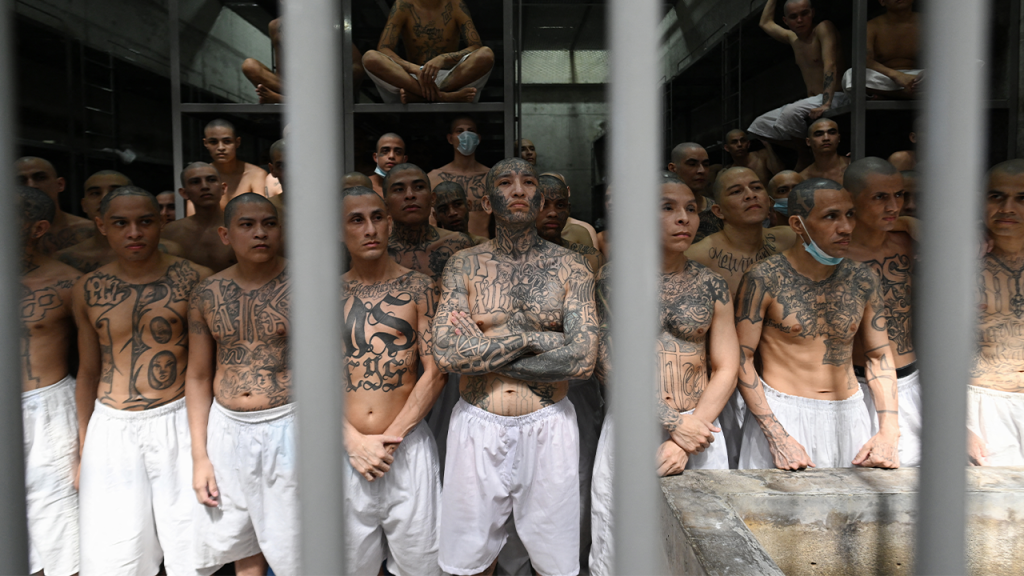In a decisive move to combat gang-related violence and illegal immigration, the Trump administration has intensified its efforts against notorious foreign gangs, particularly MS-13, during its first 100 days in office. Officials from the Department of Homeland Security (DHS) report that violent gangs are increasingly feeling the pressure due to enhanced enforcement measures. This article explores the strategies and collaborative initiatives being implemented to tackle gang violence and illegal immigration, showcasing the administration’s commitment to national security.
| Article Subheadings |
|---|
| 1) Increased Authority to Address Gang Violence |
| 2) Partnering with Local Law Enforcement |
| 3) Overview of Arrests and Impact |
| 4) Trends of Self-Deportation |
| 5) High-Profile Arrests and Future Goals |
Increased Authority to Address Gang Violence
The Trump administration’s focused approach to gang violence centers on designating MS-13 and similar organizations as terrorist groups. According to Tricia McLaughlin, Assistant Secretary of DHS, this designation grants law enforcement broader authorities in terms of deportations and other enforcement actions. The urgency to combat gang-related crime has escalated, prompting officials to implement specific measures aimed at dismantling the structural capabilities of these organizations.
The administration’s initiative hinges on the conviction that reducing the presence of violent gangs directly correlates with improved public safety. McLaughlin emphasizes that these gangs, particularly MS-13, are becoming increasingly desperate as enforcement solely targets them. This desperation exhibits itself in more violent crimes and a radical shift in their operational tactics.
Partnering with Local Law Enforcement
Recognizing the essential role local law enforcement plays in countering gang violence, the administration has bolstered partnerships under the 287(g) program. This initiative allows collaboration between federal and local police forces, maximizing resource utilization to efficiently target and apprehend gang members operating within specific communities.
According to McLaughlin, the collaboration builds a resourceful network, depending on local knowledge of gang activities. This proactive engagement allows for critical intelligence sharing and operational support. By advocating for state and local officers to be deputized, the administration aims to bridge the gap in manpower and enhance the effectiveness of enforcement efforts.
Overview of Arrests and Impact
Since the inauguration of President Trump, there has been a notable uptick in the apprehension of illegal immigrant gang members across the country. As reported, 2,394 gang members have been arrested, showcasing the administration’s aggressive implementation of immigration laws. McLaughlin noted that this number reflects only the initial wave of arrests and anticipates further increases as their operations expand.
“This is just the beginning,” she stated, underscoring the administration’s determination to continue targeting dangerous gangs, including MS-13 and Tren de Aragua. The data reflects a significant concerted effort aimed at not only arresting gang members but also preventing future gang recruitment and violence in local neighborhoods.
Trends of Self-Deportation
The aggressive immigration policies pursued by the Trump administration have led to an interesting trend: self-deportation. McLaughlin articulated that many illegal immigrants, sensing heightened risks of arrest and deportation, are voluntarily returning to their home countries.
With the implementation of technologies like the CBP Home app, which facilitates reporting and tracking illegal immigrant locations, the voluntary return of individuals reduces the need for costly deportation processes, which can exceed an average expenditure of around $17,000 per arrest. When illegal immigrants opt for self-deportation, it alleviates risks for law enforcement officers, who often face dangerous encounters while arresting gang members.
High-Profile Arrests and Future Goals
One of the administration’s most significant achievements came with the arrest of one of MS-13’s top leaders, Henrry Josue Villatoro Santos, by a joint task force involving federal and local law enforcement agencies in Virginia. This high-profile arrest represents a strategic victory in dismantling the local gang infrastructure and sends a clear message that criminal activity will not go unpunished.
Looking ahead, the administration aims to further increase arrest numbers and reinforce efforts to eliminate gangs posing serious threats to public safety. By continuously refining collaborative strategies with local law enforcement and enhancing deportation policies, the understanding is that the grip of gangs like MS-13 can further diminish.
| No. | Key Points |
|---|---|
| 1 | The Trump administration’s strategy against MS-13 includes designating the gang as a terrorist organization. |
| 2 | Collaboration with local law enforcement has been enhanced to target gang members effectively. |
| 3 | A total of 2,394 illegal immigrant gang members have been arrested since the administration took office. |
| 4 | A trend of self-deportation has been observed among illegal immigrants due to the increased risk of arrest. |
| 5 | High-profile arrests, like that of Henrry Josue Villatoro Santos, signify significant operational success in the fight against MS-13. |
Summary
The ongoing efforts of the Trump administration to combat foreign gang violence and illegal immigration underscore a robust approach to enhancing national security. Through collaboration with local law enforcement, strategic arrests, and policy adjustments, the administration hopes to eliminate the influence of dangerous gangs like MS-13. As these initiatives continue to take shape, the expectation is for a marked improvement in public safety across the nation.
Frequently Asked Questions
Question: What is the significance of designating MS-13 as a terrorist group?
Designating MS-13 as a terrorist group allows law enforcement agencies broader powers for deportation and enhances the federal government’s ability to combat gang-related crime.
Question: How does the 287(g) program function?
The 287(g) program allows federal and local law enforcement agencies to collaborate, allowing state and local officers to be trained to enforce federal immigration laws in their jurisdictions.
Question: What effects have been observed due to intensified enforcement against illegal immigration?
Intensified enforcement has led to a surge in arrests of gang members and a notable trend of self-deportation among illegal immigrants fearful of arrest.


